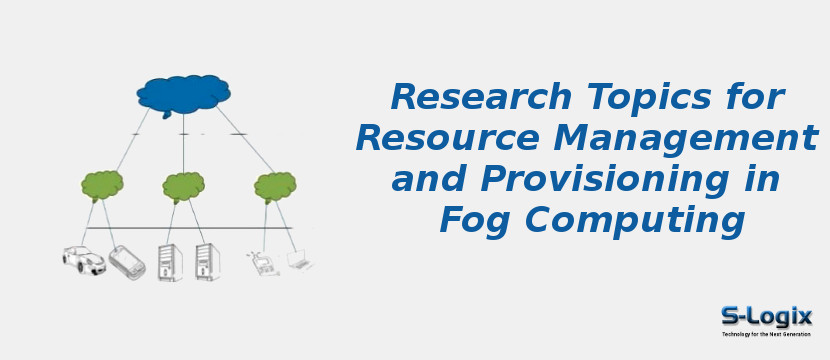Resource Management and Provisioning in Fog Computing describes allocating and managing the computing, storage, and network resources at the edge devices for delivering various services to the users. In fog computing, resources are provisioned close to the end-users, reducing the latency and improving the reliability of services. Resource management is grouped into six sub-areas:
• Resource provisioning.
• Application placement.
• Resource scheduling.
• Resource allocation.
• Task offloading.
• Load balancing.
Provisioning models are sectioned into,
• User-centric.
• Dynamic.
• Static.
• Resource discovery : Finding the available resources at the edge devices to execute the tasks.
• Resource allocation : Assigning the available resources to the tasks based on various criteria like capacity, priority, and user requirements.
• Resource monitoring : The process of monitoring the utilization of the resources and ensuring that they are used optimally.
• Resource reallocation : The process of reassigning the resources to different tasks in response to changes in the resource demand.
In fog computing, resource management and provisioning are crucial in delivering efficient and effective services to users. Effective resource management can help reduce the cost of service delivery, improve the quality of service, and enhance the user experience.
Resource Management and Provisioning in Fog Computing play a critical role in delivering efficient, reliable, and secure services to the end-users, with the benefits of :
• Reduced Latency: Provisioning resources close to the end-users, fog computing reduces the latency and improves the response time of services, leading to a better user experience.
• Increased Bandwidth: With the allocation of resources at the edge devices, fog computing increases the bandwidth available for service delivery, leading to improved service quality.
• Optimal Resource Utilization: By monitoring resource utilization, fog computing ensures that the resources are used optimally, improving efficiency and cost savings.
• Resource Constraints: Edge devices in fog computing have limited resources compared to the cloud, which can limit the scale and scope of services that can be delivered.
• Heterogeneity: Edge devices in fog computing can be diverse and heterogeneous, making managing and allocating resources challenging.
• Network Connectivity: Reliable and high-speed network connectivity is essential for effective resource management and provisioning in fog computing, and its lack of connectivity limit service performance.
• Industrial IoT: In industrial IoT, fog computing can manage and allocate resources for real-time monitoring, control, and decision-making at the edge devices.
• Transportation: In transportation, fog computing can be used for resource management and allocation for real-time tracking and management of vehicles, optimizing fleet operations and reducing the cost of transportation.
• Media and Entertainment: In media and entertainment, fog computing can be used for resource management and allocation for content delivery, video streaming, and virtual reality applications.
• Retail: In retail, fog computing can be used for resource management and allocation for real-time inventory management, customer analytics, and personalized marketing.
• Agriculture: In agriculture, fog computing can be used for resource management and allocation for precision agriculture, real-time monitoring of crops, and decision-making based on data collected from various sensors.
• Resource Optimization: There is a need for research on more efficient and effective resource management and allocation methods, considering the constraints of edge devices and the heterogeneity of the fog computing environment.
• Network Connectivity: Research is needed on improving the reliability and speed of network connectivity in fog computing, which is essential for effective resource management and provisioning.
• Resource Allocation: Studying and developing methods for efficient and effective allocation of resources in fog computing, considering the constraints of edge devices and the heterogeneity of the fog computing environment.
• Energy Efficiency: Investigating ways to improve the energy efficiency of fog computing systems, reducing the environmental impact and costs.
• Resource Monitoring: Research methods for real-time monitoring of resources in fog computing to ensure that resources are used effectively and efficiently.
